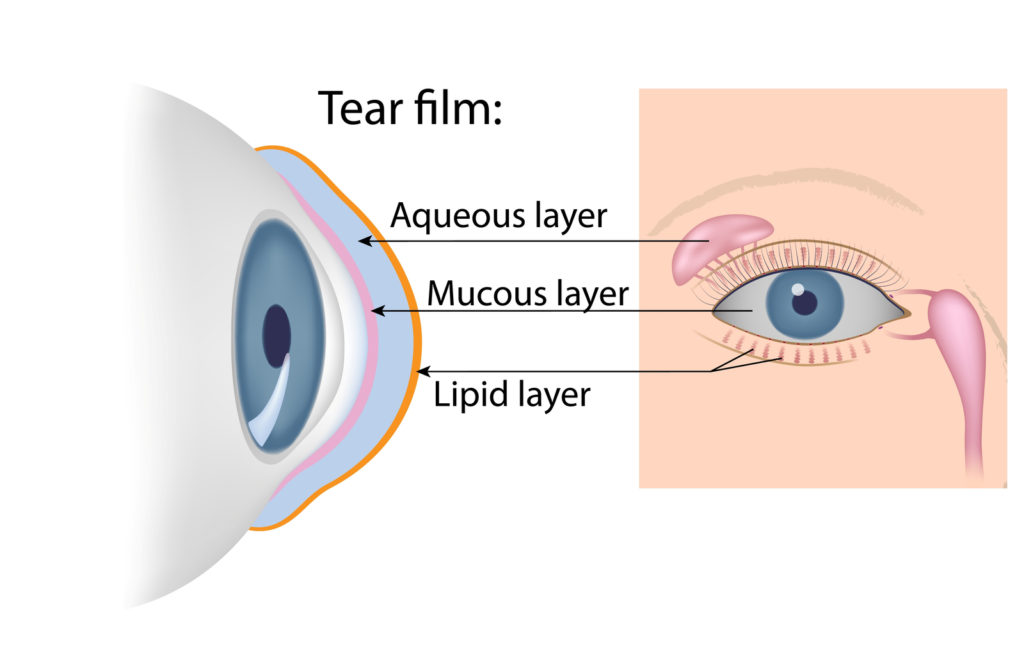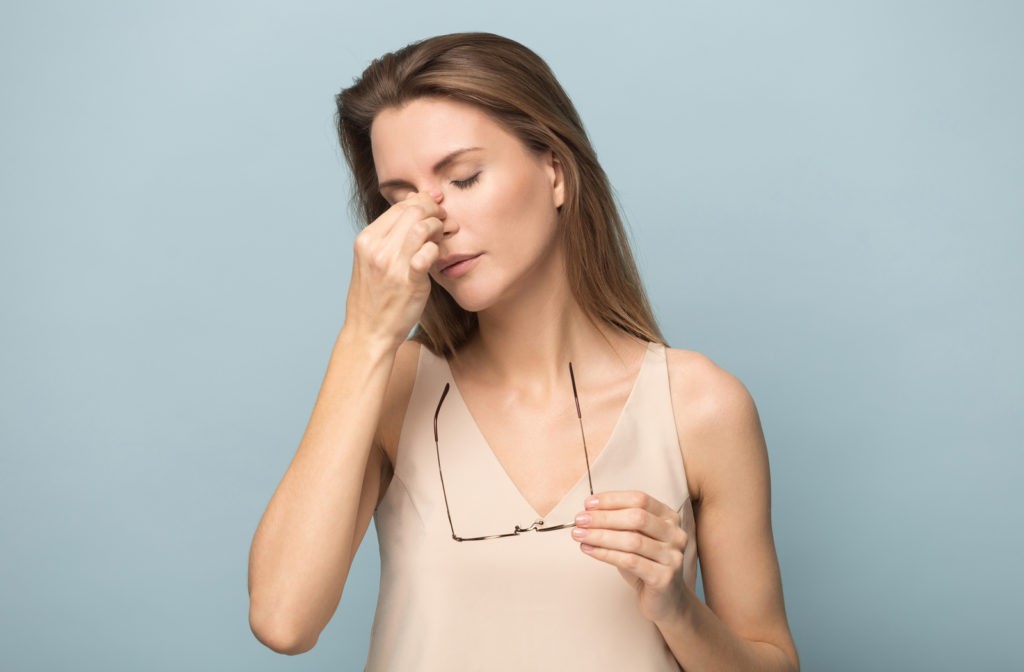Chances are you have suffered from dry eyes at some point, and that’s normal. The eyes are delicate organs that can dry out from time to time due to environmental factors, excess computer use, and fatigue.
However, dry eye disease is a very real and chronic condition that is becoming more and more prevalent. In fact, a recent study published by the American Journal of Ophthalmology concluded that over 16 million Americans have dry eye, and those are just the cases that have been diagnosed and reported.
Let’s discuss what dry eye is, how it develops, and common treatments. We’ll also discuss what it isn’t: a condition you need to live with.
Dry Eye: What it is
Dry eye is just how it sounds. It is a chronic condition where the eyes feel excessively dry and uncomfortable.
Other common dry eye symptoms include:
- Red eyes
- Stinging or burning eyes
- Tired eyes
- Blurry vision
- Watery eyes
- Stringy discharge
- Increased sensitivity to light
- Foreign body sensation
- Compromised night vision
How our Tears Contribute to Dry Eye
The main purpose of our tears is to keep our eyes sufficiently lubricated at all times. If our tears become compromised, either due to low tear production or an imbalance of tear film composition, dry eye can result.
To understand how this happens, let’s discuss our tears, and our tear film, in a little more detail.
Our Tear Film
Our tears are made up of three main layered components: oil, water, and mucin:
Oil or Lipid layer. Also called meibum, this oily outer layer of the tear film is produced by the meibomian glands and sits on top of the water layer preventing it from evaporating too quickly.
Water or Aqueous layer. The water layer that makes up the middle part of the tear film is produced by the lacrimal gland. It bathes the eye in various nutrients and contains immune cells that protect the eye from infection.
Mucin layer. The sticky, bottom layer of the tear film essentially keeps everything in place, acts as a protective layer for the cornea, and spreads our tears evenly across the surface of the eye.

If our eyes are not able to produce enough tears, or the tears we do produce don’t contain enough mucin or meibum, then our eyes become dry and irritated.
But why does our tear film become compromised in this way? There are several factors at play.
Causes of Dry Eye
Why does our tear film become compromised in this way? There are several conditions and factors that can contribute.
Meibomian Gland Dysfunction (MGD)
Meibomian gland dysfunction (MGD) is known as the leading cause of dry eye. Meibomian glands, located in the eyelids, secrete the oil in our tear film. As stated previously, this oil keeps the water in our tears from evaporating too quickly, keeping moisture in our eyes. When these glands become blocked or cease to function, meibomian gland dysfunction (MGD) and dry eye results.
MGD may lead to eyelid inflammation, a condition called blepharitis, especially along the rims.
Aqueous Tear Deficient Dry Eye (ATDDE)
ATDDE occurs when the lacrimal glands (the glands that produce our aqueous tear film layer) stop producing an adequate amount of water needed to nourish the eye. This condition is often related to various medical conditions, namely hepatitis and Sjogren’s Syndrome.
Digital Eye Strain
Digital Eye Strain, or Computer Vision Syndrome, is caused by prolonged computer or screen use. The extended near work results in less blinking and causes our eyes to become strained, fatigued, and dry.
Aging
When we age, our tear production naturally decreases. As a result, dry eye is shown to becoming increasingly common in people over the age of 50.
Health Conditions
Some systemic conditions, such as diabetes, lupus, and rheumatoid arthritis have been linked to dry eye. Similarly, Bell’s Palsy and other forms of facial paralysis that prevent the eye from closing properly may also lead to dry eye.
Medications
Many prescription and nonprescription medicines increase the symptoms of dry eye. These include antidepressants, antihistamines, acne medications, blood pressure medications, and more.
Environment
Indoor factors, such as ceiling fans and forced-air heating and cooling systems, as well as outdoor aspects like dry climates or smoky/windy conditions, can lead to dry eye.
Dry Eye: What it Isn’t
Now that we know what dry eye is, let’s talk about what it isn’t.
Dry eye isn’t something you have to live with. There are several management strategies and treatments available. And the research and clinical trials on dry eye seems to be increasing in the health industry as a whole.
Dry Eye Treatments Include:
Artificial Tears
Over the counter eye drops can offer temporary relief of dryness and discomfort and provide your eyes with the lubrication they need. It is best to choose preservative-free drops, which can lessen the chance of irritation.
Medicated Eye Drops
Medicated eye drops like Restasis help combat dry eye by reducing inflammation and helping your eyes produce more of your natural tears.
Punctal Plugs
Punctal plugs are small, biocompatible caps that are placed in your tear ducts to prevent your tears from draining too quickly. This increases your tear volume and can provide relief from some forms of dry eye.
Meibomian Gland Expression
As described, the meibomian glands in our eyelids produce meibum, an oil, which keeps our tears from evaporating too quickly. If these glands become clogged, they can’t provide sufficient oil, causing dry eyes. Meibomian gland expression is an in-office treatment that uses heat and eyelid massage to soften the meibum that is obstructing your glands so that it can flow freely.
BlephEx
BlephEx is an effective in-office procedure designed to gently exfoliate your eyelashes and the edges of your eyelids to remove debris. By removing the debris, your eyes can produce more tears, relieving your dry eye symptoms.
Lipiflow
Lipiflow is a thermal pulsation device designed for in-office use that uses gentle pressure and soothing warmth to encourage your eyes to produce high-quality tears.
